In Taranaki the temperature gauge is rising and pasture growth is finally looking good. In Southland, they're flat out tailing and some farmers are pleasantly surprised the lambing tally is higher than scanning predicted. Listen to On the Farm for more on farms and orchards around the country.
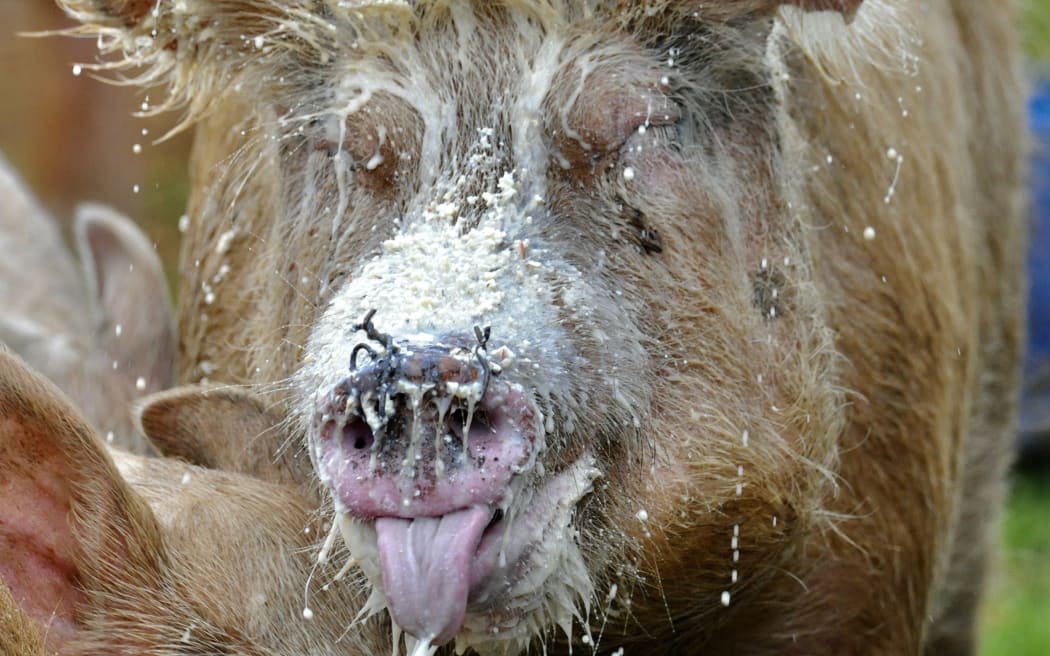
Pigs enjoying a feed Photo: davidhancock.com.au
In Northland red kumara planting was underway earlier in the week with birds singing and the sun shining. However more than 50 mm of rain fell in one day putting a halt to further planting until next week. About 15 percent of kumara tubers have been planted so far and growers are worried about prices as New Zealanders are not buying as much red kumara as they used to. Some growers are potentially losing money this season. Around Whangarei dairy farmers are pleased about a good dousing of rain - our contact received about a 100 mm in one day. Milk prices are good but dairy farmers are keeping an eye on continually rising operating costs. Milk volumes are slightly lower than usual for this time of the year, and some have passed their window for peak production as spring grass growth wanes.
Around Pukekohe the week has been variable with a few showers. On Thursday night an easterly storm moved over the district bringing with it the threat of damage from wind. Gold kiwifruit pollination is nearly finished and the green variety will follow. Although local kiwifruit growers escaped late frost damage, flower numbers are down due to lack of winter chilling.
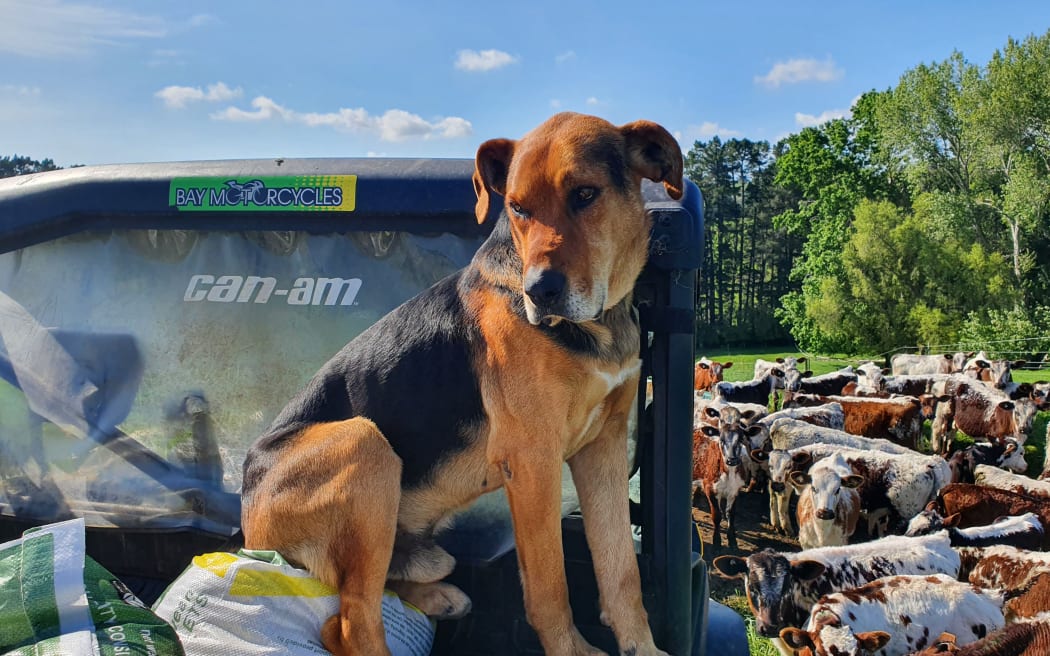
Diesel finds a comfy spot to sit during calf feeding Photo: RNZ/Sally Round
In Waikato windy weather has also dried out paddocks but grass growth remains good. A fair bit of silage is being made and other crops are in the ground but later than usual due to spring's wet and boggy conditions. The region's blueberries grown in tunnel houses are getting decent prices at the market. But those not grown under cover have suffered due to a wild and wet spring. One contact expected the weight of berries harvested to be down by about 450 tonnes - or 10 percent of the crop. Early spring frosts also slowed strawberries from maturing and getting to market. However, in weeks to come there's expected to be an abundance of tasty, big bright red berries.
Across in Katikati in the Bay of Plenty blueberry farmers are also witnessing the effects of chilly weather and frosts which killed buds and wrote off a large amount of this season's fruit. Avocadoes are being picked and the markets in Australia and Asia are proving fruitful for growers. Gold kiwifruit are being pollinated and the first green kiwifruit will be too over the next few weeks. Lovely weather earlier in the week allowed copper and insect sprays to be applied to the vines - albeit later than usual.
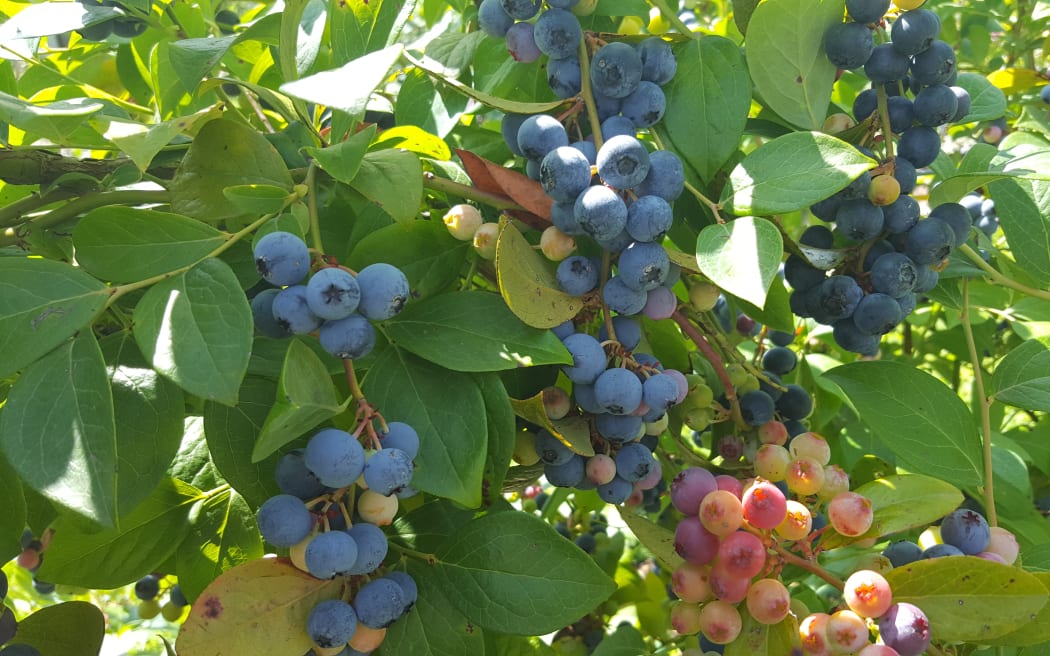
Photo: RNZ / Carol Stiles
In the King Country grass growth has also been behind and stock weight is lower than farmers would like. They are anticipating a dry summer and don't have much spare feed as much of it was needed during spring. On top of that, the price for shearing a sheep has risen from about $4.70 to $5.20. There are also quite a few farms in the region for sale due to harder economic times.
In Taranaki the temperature gauge is rising and pasture growth is finally looking good. Quite a few paddocks are being shut off for silage and crops of maize and turnip are beginning to germinate. In southern Taranaki pasture growth and crops are about a month behind due to extreme winter weather. Now the soil is drying out many farmers are worrying about whether they will have enough feed if there is a major drought early next year. Cow mating is going well for those providing supplements but some who have been relying solely on pasture are noticing their cows are lighter than usual. This is leading to lower pregnancy rates as well. And some dairy farms' milk yields are also lower than usual.
On the East Coast near Gisborne there's been quite a bit of drizzly rain which is keeping farmers happy as light easterly winds have been drying out the land. Like many other regions, grass growth was slow earlier in the spring but that's changing with the warmer conditions. Some farmers are weaning their lambs but are frustrated with delays at local freezing works due to staff shortages and illness.
In Wairarapa recent rain means plenty of growth but farmers are keen for more of the wet stuff as the hills are already looking thirsty. The paddocks are dry and clumpy making it difficult to plant chicory and clover. However there've been multiple trips across the pasture with ploughs and raking gear to ensure there's not too much of a delay in planting crops for lambs to munch on before they end up on the Christmas dinner table.
At the top of the South Island in Wakefield hops are being trained to grow on strings as they develop in the warm weather. Beer fans will be relieved as they are doing well despite the cold snap a couple of months ago. A mixture of hot weather along with rain means hops and fruit orchards are growing nicely.
Seddon farmers are noticing the weather turn from wet and cold into dry - quite quickly. Grass on hill country farms is burning off a bit but lucerne is growing well. Meat prices are worth smiling about with two-year-old bull beef getting $6.25/kg at the works in Blenheim. And lambs are also selling well at around $230 per head for well-nourished stock. Vineyards in the area are also looking good with plenty of florets - these grapes-to-be bode well for a healthy harvest.
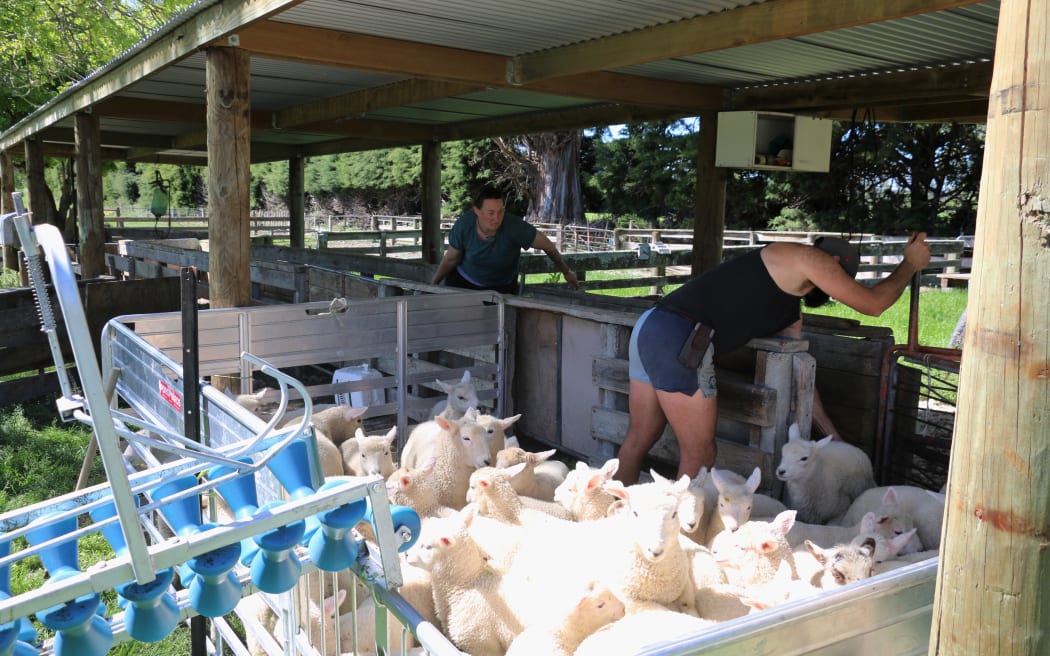
Lamb tailing is half way through in some areas of the South Island Photo: Cosmo Kentish-Barnes
On the West Coast near Hokitika many dairy farmers say they are busy providing feedback on the government's emissions' proposal. Many dairy cows are about halfway through mating. Grass growth is good for this time of the year and last week's rain helped. Paddocks are also being locked up for silage. Our contact changed to once a day milking last year - but has now returned to twice a day as they were not making money as milk volume was slightly down and increasing costs have been an issue.
Across in southern Canterbury the weather has been a little foggy and drizzly. Lamb tailing is halfway through and the de-tailed lambs could do with a bit of warmer weather to make their diet tastier. Angus cows have just finished calving and they are being fed baleage, hay and sheep nuts when needed. The growing wallaby pest problem is challenging for farmers ... one wallaby eats the equivalent of three cross-bred ewes. About 1400 wallabies are dispatched each year and that number needs to increase as the number of hopping horrors rises.
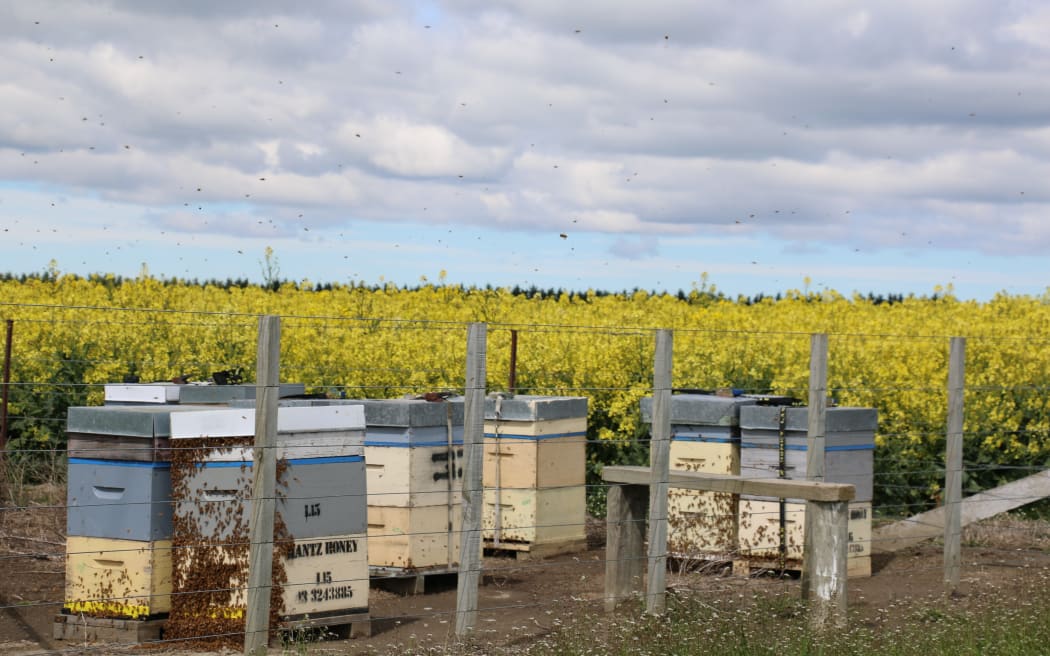
Photo: RNZ / Cosmo Kentish-Barnes
In central Otago, the climate has been up to 25 degrees and grape growers are smiling. Vine shoots are being thinned, wires lifted, and weeds sprayed as grape varieties are pampered. About 50 people from Vanuatu have arrived in the region to help tend the vines. A winery in Cromwell has just started putting its red wine in a two-litre box and distributing it around the country.
In Southland, its baleage time with farmers mowing pasture for storing feed. The weather is looking good for it to mature and pasture has been growing well. Earlier in the week a sudden deluge of rain flooded low lying land and raised headwaters by three metres. Tailing - or docking - is flat out and some farmers are pleasantly surprised that their lambing tally is higher than scanning predicted. They say mother nature is doing well for those at the bottom of the Mainland as the extra rain has been absorbed nicely into the land.
The idea of planting trees for carbon credits is still a hot topic among farmers around the country ... one farmer told us "a plate of pine needles will need a hell of a lot of tomato sauce."

